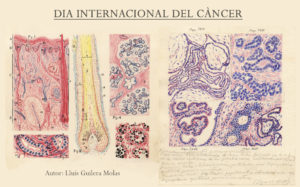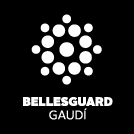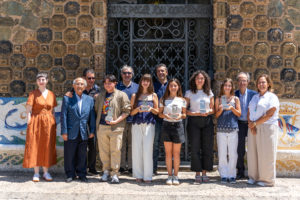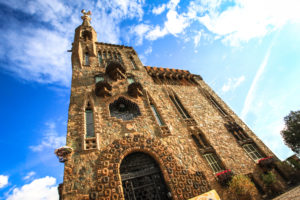By: Ferran Garcés

World Cancer Day is celebrated on February 4 because on this day, in 2000, the World Health Organization (WHO), meeting in Paris at the time, decided to establish a special date to promote awareness of this disease and thus contribute to its prevention and control. A very necessary action, since cancer is one of the main causes of death in the world, in addition to the suffering it entails for the affected patients (1). We should also bear in mind that this month, the 11th is the International Day of Women and Girls in Science, and the 15th is the International Day of the Child with Cancer.
The Bellesguard Tower has some episodes related to these days. The first, the origin of the Hospital de la Santa Cruz y Santo Pablo, one of the most important centers of the city of Barcelona in the treatment of cancer. This hospital was founded in 1401 by Martin I the Humane, the king who had Bellesguard castle built. Moreover, as we read on the website of the University of Barcelona: “It was King Martin the Humane who first proposed the creation of a Estudi General in Barcelona in 1398. The representatives of the city rejected the request, and the monarch founded on January 10, 1401 the Estudi General de Medicina de Barcelona, to which a faculty of arts was added in 1402, and obtained a founding bull granted by Pope Benedict XIII, Pope Luna.” (2) Incidentally, this famous pontiff was one of the characters who lived with Martin I in his castle of Bellesguard, in 1409.
The second relevant episode took place five centuries later. After the Civil War, the current Bellesguard Tower became an oncology clinic thanks to the Guilera family. This family has a history closely linked to medicine, and there are many doctors, of different specialties, who within their discipline have treated some variety of cancer. However, we will focus on two of them, specialists in this disease: Lluís Guilera Molas and Josep Malvehy Guilera.
The first, Lluís Guilera Molas, was a prestigious oncologist, pioneer in the application of radium needles. In the Bellesguard Tower, some of his medical records and clinical devices are still preserved. One of the objectives of the Bellesguard Research Group is precisely the restoration and museumization of the aforementioned materials.
Josep Malvehy Guilera is the grandson of the former physician. Josep is a world reference in the study, diagnosis and treatment of melanoma and skin cancer (3). He graduated from the University of Barcelona, that is, the institution founded by Martin I and Benedict XIII, and is currently one of its professors.

More coincidences. We have said that this month also marks the International Day of Women and Girls in Science. It turns out that Lluís Guilera Molas was one of the last students of the well-known scientist Marie Curie, mother of radiotherapy, the technique used by this Catalan doctor in his clinic in Bellesguard, just after the Second World War. A technique that, at the time, was a real novelty. He called it “curietherapy” (4).
We began by saying that cancer is one of the main causes of death in the world. Even so, despite these data, experts insist that the survival figures for cancer patients have greatly improved. Little by little, we are winning the battle. And it is partly thanks to all these professionals who are leading the way.
Notes
(1) “The 10 leading causes of death”, World Health Organization, 9/12/2020. Link.
See also: “Deaths by cause of death. Definitive 2021 and provisional semester 1/2022”, INC. National Institute of Statistics, 12/19/2022. Link.
(2) “La Universitat de Barcelona: more than five centuries of history”, Universitat de Barcelona website. Link.
(3) To know more, consult the following link of the web of the Dermatological Diagnosis: Josep Malvehy Guilera.
(4) Lluís Guilera Moles, “La curieteràpia en el cáncer de pecho”, web revistes.iec.cat, link.




